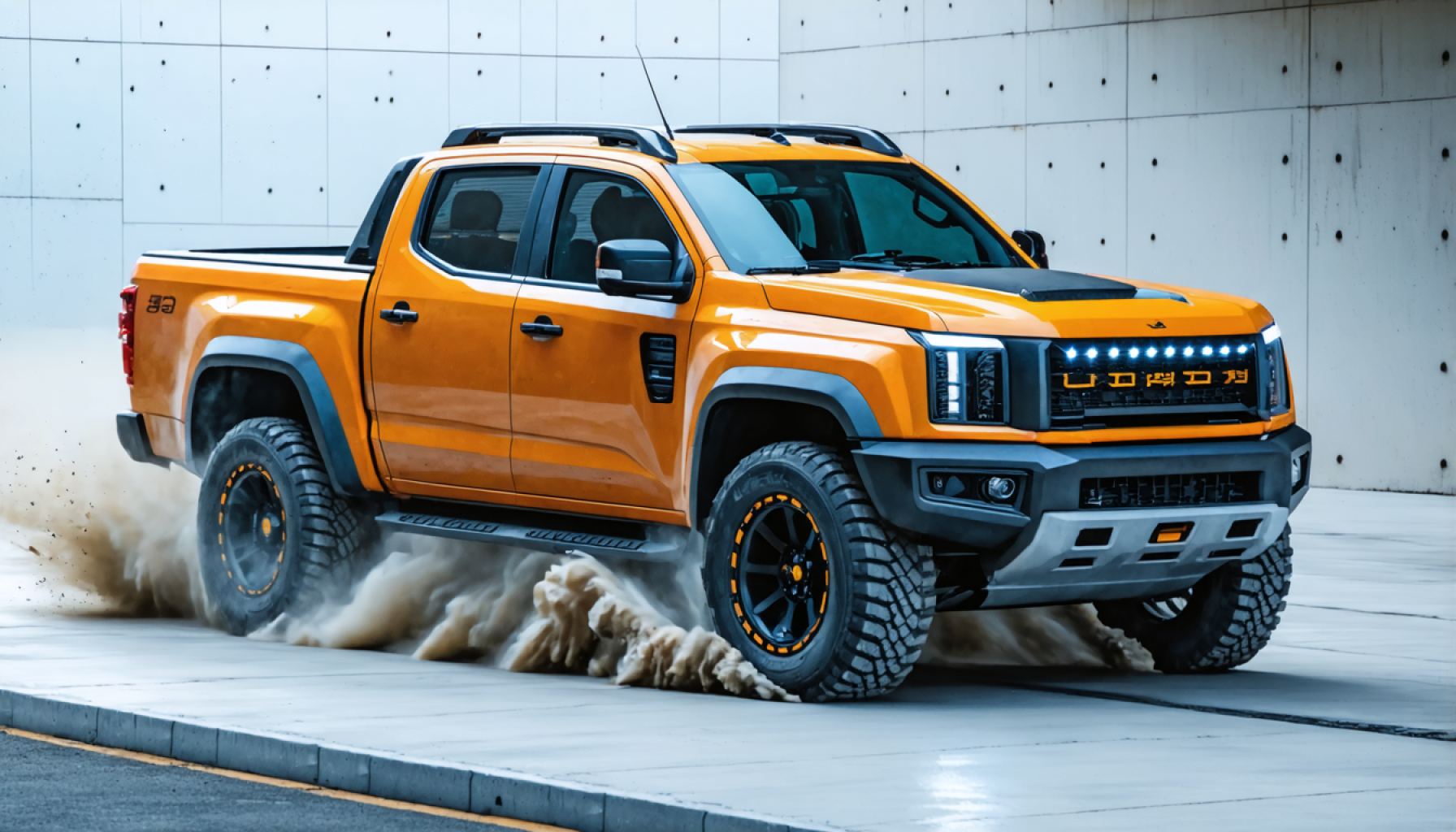- Chinese pickup trucks are increasingly popular in Australia due to affordability, innovation, and modern appeal.
- Hybrid models like the BYD Shark 6 attract environmentally conscious consumers concerned about climate change and fuel costs.
- These vehicles feature advanced technology, such as touchscreen interfaces and driver-assistance systems, at competitive prices.
- Chinese automakers successfully align their marketing strategies with Australian preferences for durability and performance.
- As globalization influences local markets, buyers seek vehicles offering cutting-edge technology, value, and sustainability.
- The rise of Chinese pickups signifies an evolving landscape in Australian transport, highlighting broader shifts in consumer expectations.
Car enthusiasts along Australia’s sweeping coastlines are noticing an unexpected vehicle invading their roads—Chinese pickup trucks. These vehicles, like silent automotive waves, are lapping against the shores of Australia’s car market, driven by a blend of affordability, innovation, and modern appeal.
Amidst a traditionally tough market dominated by renowned names like Toyota and Ford, Chinese automakers have strategically positioned their robust yet economical pickups as serious contenders. At the forefront of this influx is the emergence of hybrid models, like the BYD Shark 6, which are rapidly gaining traction among Australian consumers. Known for their sleek designs and environmental efficiency, these trucks are capturing the imagination of a demographic increasingly aware of climate change and rising fuel costs.
However, it isn’t merely the economics of cost and sustainability that are fueling interest. The Chinese pickup trucks boast cutting-edge technology once reserved for high-end competitors. Features that delight the tech-savvy—touchscreen interfaces, advanced driver-assistance systems, and connected car capabilities—are now accessible in these new-fangled vehicles at a price point appealing to the discerning buyer.
Chinese makers have adeptly captured this moment by tuning their marketing and distribution strategies to resonate with Australian values. They grasp the local market’s penchant for durability, offering vehicles that confidently promise rugged performance amidst Australia’s diverse terrain. Whether navigating Melbourne’s dense urban traffic or conquering the rugged outback, these pickups are proving themselves dependable partners.
A key takeaway from this shift is how globalization is reshaping local automobile markets. China’s automotive surge illustrates a larger narrative: middle-market buyers are seeking more than just vehicles—they are prizing cutting-edge technology, value for money, and eco-conscious choices.
For avid car enthusiasts and everyday drivers alike, the growing presence of Chinese pickups in Australia augurs a dynamic evolution in travel and transport preferences. As these trucks become more ubiquitous, the landscape of the Australian roadscape is set to transform, reflecting larger global shifts in consumer expectations and manufacturing innovations.
Why Chinese Pickup Trucks Are Taking Over Australia’s Roads
The arrival of Chinese pickup trucks along Australia’s picturesque coasts marks a significant shift in the automotive landscape, driven by a blend of affordability, innovation, and eco-consciousness. While the source material highlights some key points, let’s delve deeper into the details surrounding this automotive invasion and uncover additional facts, insights, and future implications.
Features and Specifications
Chinese automakers, including leaders like BYD, Great Wall Motors, and MG, are gaining traction in Australia’s market by offering models like the BYD Shark 6. These pickups come equipped with not just eco-friendly engines but also state-of-the-art technology at competitive prices. Features often include:
– Hybrid and Electric Variants: Cutting-edge hybrid technology and full electric options cater to environmentally conscious drivers.
– Smart Technology: Touchscreen infotainment systems, advanced driver-assistance systems (ADAS), and in-car connectivity.
– Rugged Durability: Built to handle varied Australian terrains, from urban areas to rugged outbacks.
Pros & Cons Overview
Pros:
– Affordability: Chinese pickups generally offer a lower price point than established competitors like Toyota and Ford, achieving a balance between cost and features.
– Eco-Friendly Options: Availability of hybrid and electric models aligns with global trends toward sustainability.
– Technology: Access to innovative technology previously exclusive to luxury vehicles enhances user experience.
Cons:
– Brand Recognition: Chinese brands still struggle with brand recognition, facing trust barriers in markets with strong loyalty to traditional brands.
– Resale Value: Uncertain resale values due to nascent brand presence and market perception.
Market Forecasts & Industry Trends
The influx of Chinese pickups aligns with a broader trend of globalization in the automotive market. As consumers prioritize sustainability and technology, Chinese manufacturers are expected to increase their market share:
– Projection: According to a recent report by Deloitte, Chinese automakers could capture up to 15% of the market share in Australia by 2030.
– Trend: Increased investment in research and development by Chinese companies is likely to yield even more competitive models in terms of technology and efficiency.
Controversies & Limitations
The entry of Chinese pickups has not been without controversy. There are concerns regarding the long-term reliability and serviceability of these vehicles, given the limited network of service centers and spare parts availability compared to established brands.
Real-World Use Cases
– Urban Commuters: Ideal for urban environments with hybrid options offering both fuel efficiency and reduced emissions.
– Rural and Outback Driving: Their ruggedness and durability make them suitable for challenging terrains.
Actionable Recommendations
– Research and Compare: Potential buyers should thoroughly research individual models and compare them against established brands regarding total cost of ownership, resale value, and service networks.
– Evaluate Needs: Consider your primary use cases to decide whether the advanced tech features or eco-friendly engines justify the investment.
Conclusion
The shift toward Chinese pickup trucks in Australia exemplifies a broader global evolution toward technologically advanced, affordable, and environmentally friendly vehicles. For those in the market for a new pickup, it’s worth exploring these newer players alongside traditional brands to ensure the best value proposition.
For more automotive insights and updates, visit Auto Blog or CarBuzz.
